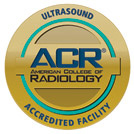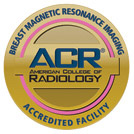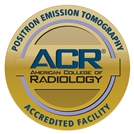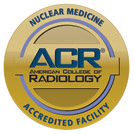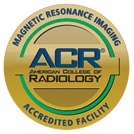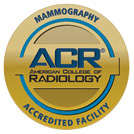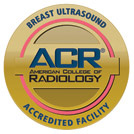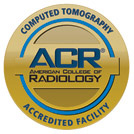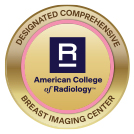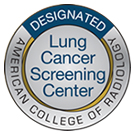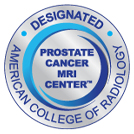Magnetic resonance imaging (MRI) uses a combination of radio waves, magnets and a computer to produce pictures of the body’s internal structures, particularly soft tissue and the brain. In the early stages of this diagnostic imaging procedure, factors like contrast-to-noise ratio (CNR) and signal-to-noise ratio (SNR) affected MRI image quality.
High-field MRI (3 Tesla) emerged in the 1980s as an upgrade to low-field scanners and has become more common in the last two decades.
What Is a High-Field MRI?
MRI is a non-invasive imaging procedure that uses a large magnet and radio waves to take internal pictures without radiation. These images then appear on a computer screen.
An MRI machine features a large, tube-shaped magnet. When a patient passes through, the magnetic field produced aligns with the body’s molecules and the radio waves present encourage the body’s atoms to give off a low-level signal. These factors result in detailed images of the brain, blood vessels and other soft tissues, making MRI ideal for patients who need routine monitoring through imaging.
Technology has evolved since MRI was introduced. The first available low-field images did not provide much detail, due to the amount of CNR and SNR generated. By the 1980s, high-resolution or high-field MRIs appeared to solve this issue by improving CNR and SNR and upgrading spatial resolution and acquisition time and were widely adopted by the 2000s.
Compared to its predecessor, high-field MRI not only delivers greater detail but allows for imaging of smaller structures. This combination means high-field MRI suits a broader range of both patient and research applications.
Today, 3T MRI technology is common for various clinical applications requiring speed, detail and accuracy and is used for MR angiography, susceptibility weighted imaging, MR spectroscopy, diffusion tensor imaging and functional MRI.
Compared to low-field MRI technology, high-field MRI:
- Allows more detailed images to be acquired almost twice as fast
- Captures more detail than low-field MRI
- Requires less time to capture an image, which makes patients feel more comfortable and at ease, so images are less likely to suffer from movement
- Can examine much smaller areas of the body
- Can lead to a more accurate diagnosis
These widely adopted capabilities have since contributed to another advancement: ultra-high field (UHF) MRI, which operates at 7T to 10.5T. Emerging in the late 1990s, UHF MRI remains primarily a research technology that provides highly detailed whole-body imaging.
What Are the Uses of High-Field MRI?
Common with closed MRIs, 3T technology is used for two applications: diagnostic purposes requiring high-resolution images and monitoring a patient’s condition. Applications include:
- Neuroradiology for visualizing the brain stem, cranial nerves and other structures to diagnose aneurysms, observe the signs of a stroke or seizure and monitor degenerative conditions like multiple sclerosis, Parkinson’s and Alzheimer’s.
- Better visualization of the body’s organs, including the heart, liver, ducts, kidneys, spleen, bowels, reproductive organs and adrenal glands.
- Observing the spine and spinal cord.
- Detailed imaging of the breast tissue and lymph nodes for diagnosing cancer.
- Examining the joints for signs of degeneration.
High-field MRI technology can assist with diagnosing a range of conditions, including:
- Aneurysms
- Tumors
- Cancer
- Internal traumatic injuries
- Pinched nerves
- Alignment and musculoskeletal issues
- Multiple sclerosis
- A stroke
- Arthritis
Yet MRIs are not ideal for every patient, including those with a metal implant, pacemaker, defibrillator or joint prosthesis.
What to Expect During a High-Field MRI
Due to the safety risks created by the magnet and radio waves, patients must notify their doctor ahead of time if they have an implanted device, including a pacemaker, defibrillator, brain or nerve stimulator, joint implant, cochlear implant, implanted pump, aneurysm coil, shunt, stent, blood clot filter or another prosthesis.
Patients should also tell their doctor if they have metal fragments lodged in their body, including a bullet or shrapnel, use a medication patch, may be pregnant, cannot lie down for a minimum of 30 minutes or experience claustrophobia.
In these cases, adjustments can be made or the doctor may request a different imaging procedure, like a CT scan. Patients who experience claustrophobia may be given a sedative.
Patient Preparation
Before a high-field MRI, patients must remove all jewelry and metal items, including hearing aids and eyeglasses, as the magnetic field can turn these objects into projectiles. Most patients will be asked to change into a hospital gown. Expect to sit still for 30 minutes.
Imaging may also involve contrast dye, typically administered intravenously, which highlights the body’s internal structures so they appear more clearly on a computer screen.
During & After the Procedure
The MRI machine is a closed environment that generates periodic noise, including knocking and clicking sounds that last for several minutes. The patient starts lying on their back on a scanning bed before the technologist slides them into the machine. Earplugs or headphones may be worn to minimize noise exposure.
During the procedure, the patient is advised to remain still to improve image quality. The technologist through an intercom and the patient can talk back if experiencing discomfort or concerns.
Radiologists interpret the images and provide important insights to the referring physician for diagnosis and developing a treatment plan. Following the MRI, your doctor will discuss any findings, including follow-up tests.
Has your doctor recommended a high-field MRI? Contact Midstate Radiology Associates to make an appointment.





